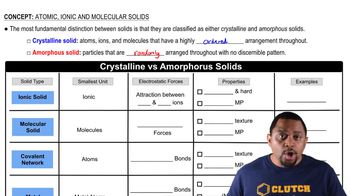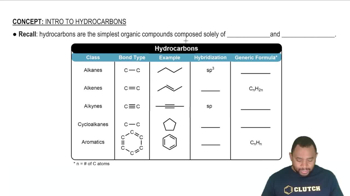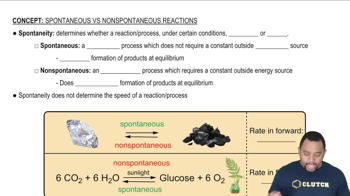Here are the essential concepts you must grasp in order to answer the question correctly.
Monomers and Polymers
Monomers are small, simple molecules that can chemically bond to form larger structures known as polymers. In polymer chemistry, monomers serve as the building blocks for creating various materials, such as plastics and fibers. Understanding the distinction between monomers and polymers is essential for identifying which substances can participate in polymerization reactions.
Recommended video:
Crystalline vs Amorphous Solids
Types of Hydrocarbons
Hydrocarbons are organic compounds consisting entirely of hydrogen and carbon. They can be classified into alkanes, alkenes, and alkynes based on the types of bonds between carbon atoms. Ethene (ethylene) is an alkene with a double bond, making it a suitable candidate for polymerization, while ethanol and methane do not have the same reactivity for forming long-chain polymers.
Recommended video:
Polymerization Process
Polymerization is the chemical process through which monomers link together to form polymers. There are two main types: addition polymerization, where unsaturated monomers like alkenes react to form a polymer, and condensation polymerization, which involves the elimination of small molecules like water. Recognizing the conditions and types of monomers that can undergo polymerization is crucial for determining their suitability as monomers.
Recommended video:
 Verified step by step guidance
Verified step by step guidance


